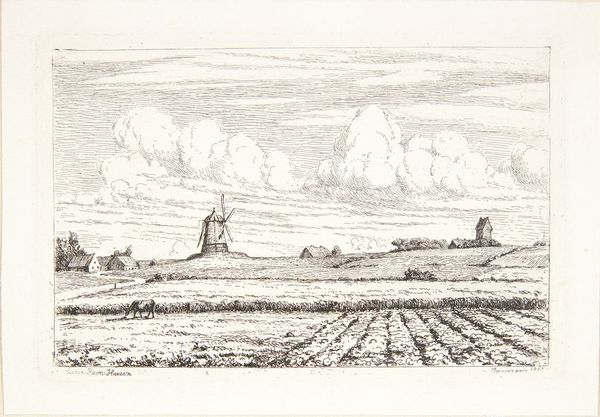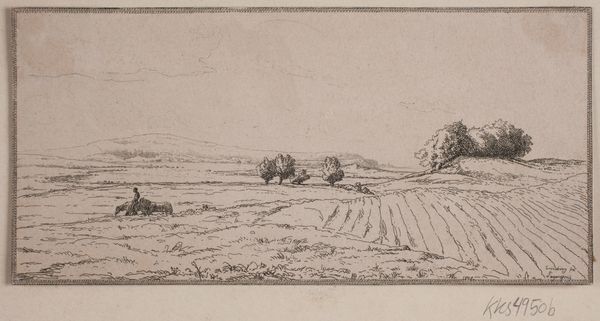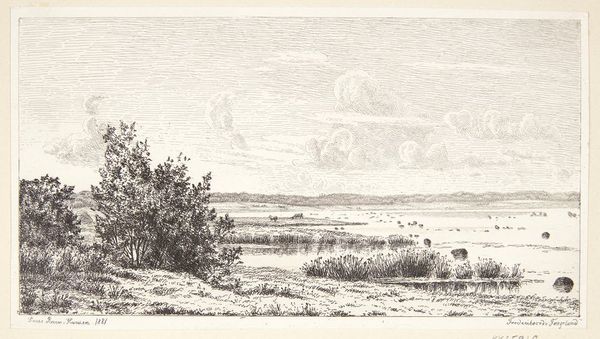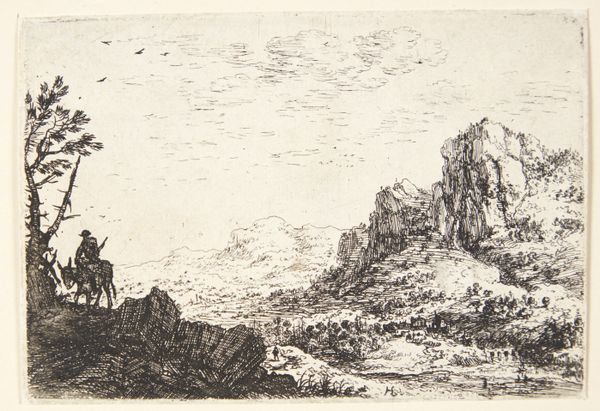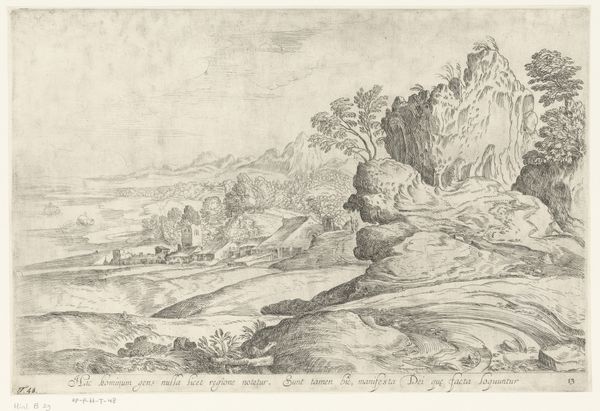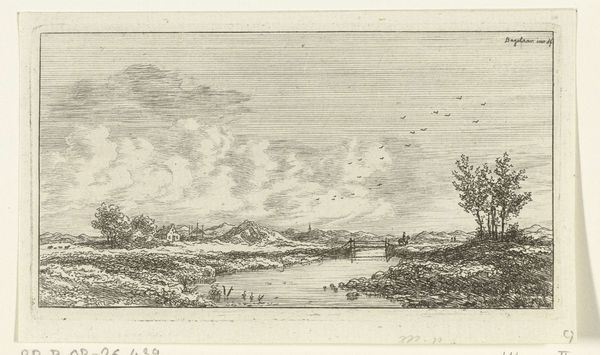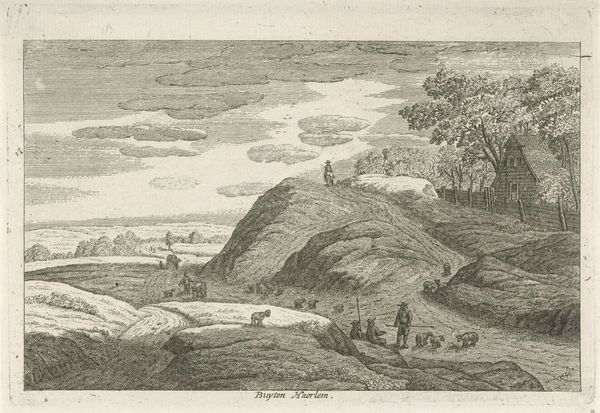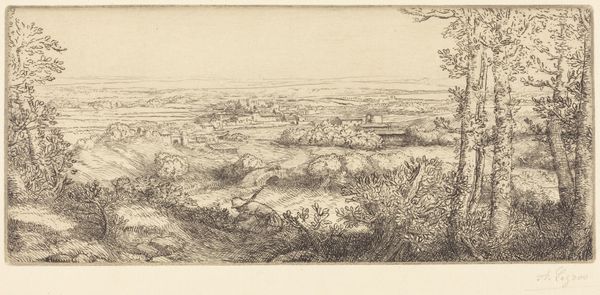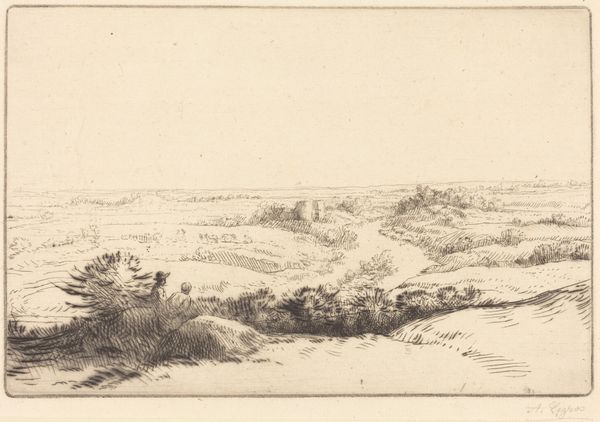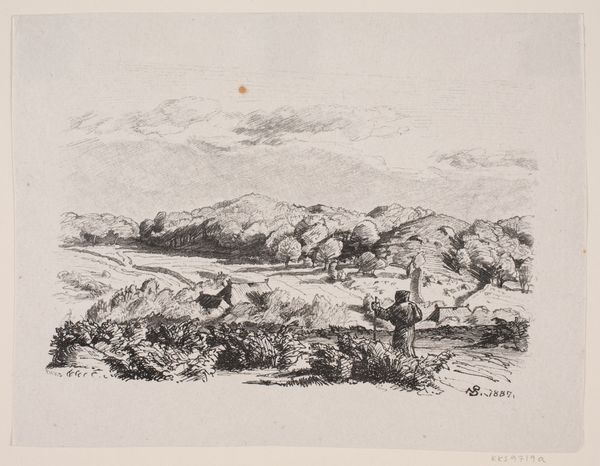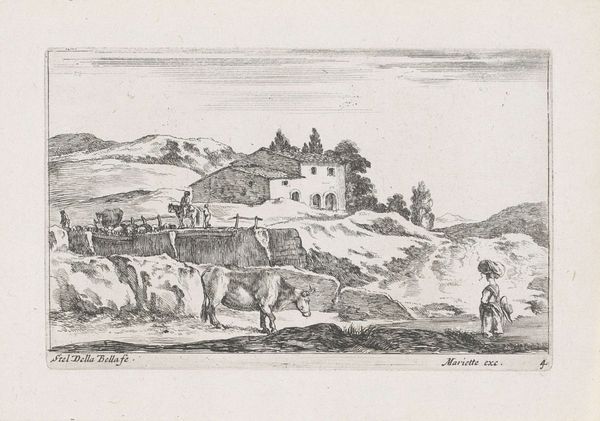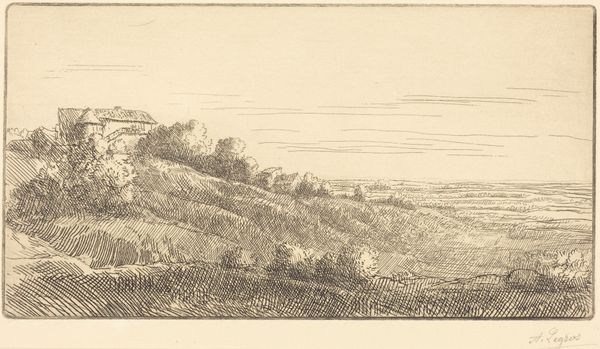
print, etching
#
16_19th-century
# print
#
etching
#
landscape
#
realism
Dimensions: 76 mm (height) x 116 mm (width) (bladmål)
Curator: This is "Dråby Mølle," an etching made in 1882 by Louise Ravn-Hansen, part of the collection here at the SMK. Editor: It's fascinating; the landscape breathes. The intricate hatching used to create light and shadow feels… labor-intensive. You can almost feel the effort put into capturing this scene. Curator: As a print, the notion of reproduction and dissemination is central. Ravn-Hansen would have carefully prepared her metal plate, incising the lines that hold the ink. Think of the many prints that could be pulled from this one plate, making the image widely available. The paper itself takes on meaning here. Editor: And she chose her symbols meticulously, too. The windmill, prominently placed, wasn't just about grinding grain; it signified progress, human intervention in nature. That lonely horse grazing in the field connects it all together. The plowed fields draw me to themes of labor and harvest. It suggests both sustenance and mortality. Curator: The mill as a motif also echoes the Realist movement, the interest in depicting everyday life, the industrial changes sweeping through Denmark. But it goes further by showcasing Ravn-Hansen's skill as a printer. We can see that realism is about artistic intervention through carefully chosen material. Editor: I agree. It feels more deliberate because of the level of detail. And that level of details extends from that windmill into those heavy clouds. You can really perceive the artist's desire to showcase that intersection of technology, work, and the environment. Curator: Consider also, what it meant for a woman artist to be engaging with this technology and labor in the late 19th century, choosing a typically pastoral scene, claiming ownership over the means of artistic production and subject matter. Editor: That brings everything into focus. Now, as I study the picture I realize the symbolism that underscores this scene. The work depicts so much of Denmark’s character as an industrial country that looks nostalgically at nature. Curator: Precisely, we see not just an image, but a claim and testament of what can come out of artistic process and cultural setting. Editor: An assertion imprinted onto the metal and transferred onto paper, lingering far longer than we would suspect.
Comments
No comments
Be the first to comment and join the conversation on the ultimate creative platform.
